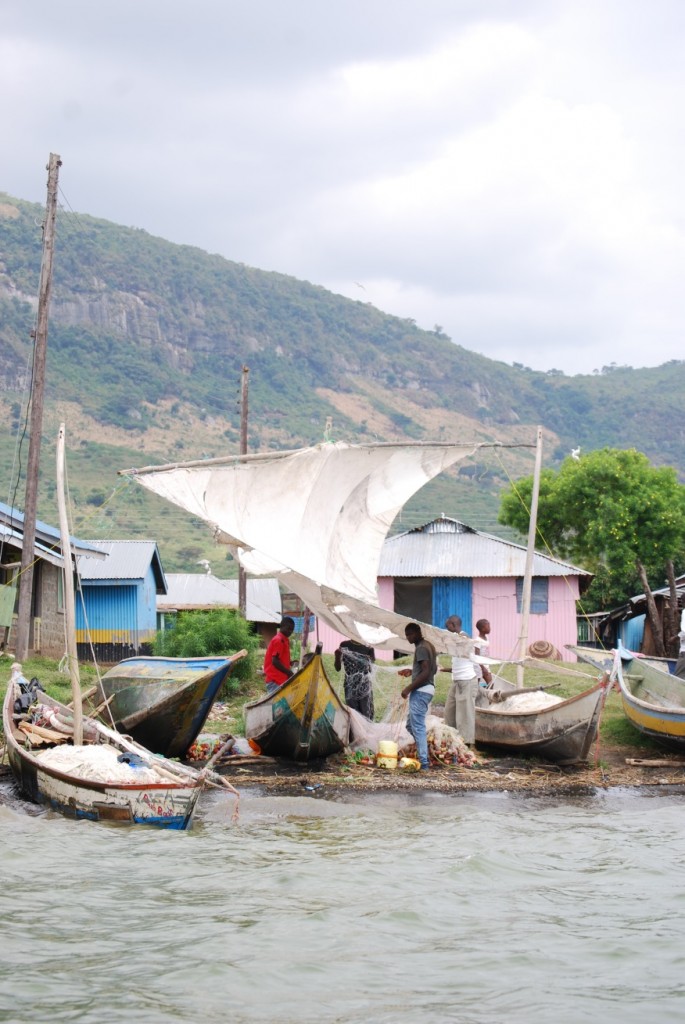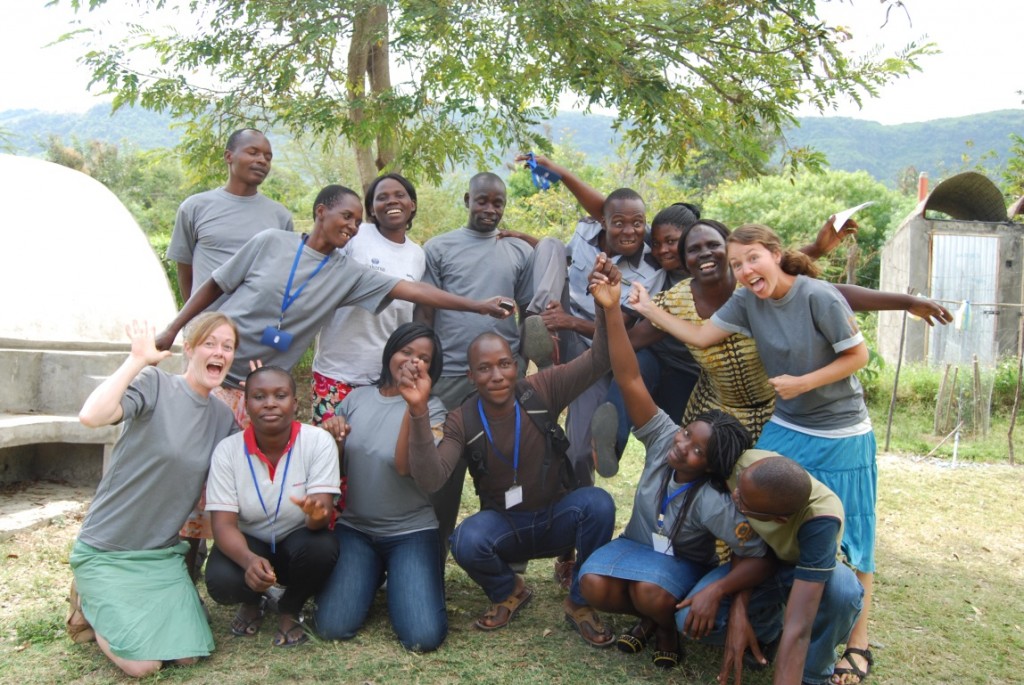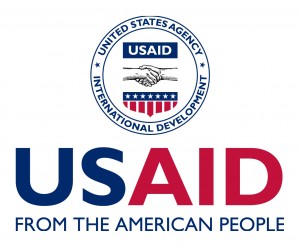 In June 2014 I returned to Mfangano Island in Lake Victoria in Kenya for my third summer. My goals were to support the second year of data collection, oversee data management, and facilitate a breast milk assessment while going fishing and eating Nile perch, dagaa, and tilapia. This work contributes to the Research on Environmental and Community Health (RECH- meaning “fish” in the local language, Dholuo) study on the island in collaboration with the Kenya Medical Research Institute and Organic Health Response. The purpose of the RECH study is to assess how changes in fishery access impact fishing activities, household food security, nutrition, and child development. Such changes exist with a backdrop of fishery productivity declines, despite initial industry boons. In the 1950s non-native Nile perch and tilapia were introduced into Lake Victoria, leading to one of the largest extinctions in recent history and greatly altering the ecology of the lake. The RECH study seeks to understand some of these effects and impacts.
In June 2014 I returned to Mfangano Island in Lake Victoria in Kenya for my third summer. My goals were to support the second year of data collection, oversee data management, and facilitate a breast milk assessment while going fishing and eating Nile perch, dagaa, and tilapia. This work contributes to the Research on Environmental and Community Health (RECH- meaning “fish” in the local language, Dholuo) study on the island in collaboration with the Kenya Medical Research Institute and Organic Health Response. The purpose of the RECH study is to assess how changes in fishery access impact fishing activities, household food security, nutrition, and child development. Such changes exist with a backdrop of fishery productivity declines, despite initial industry boons. In the 1950s non-native Nile perch and tilapia were introduced into Lake Victoria, leading to one of the largest extinctions in recent history and greatly altering the ecology of the lake. The RECH study seeks to understand some of these effects and impacts.
To capture what RECH looks like in the field, I will share my experiences from witnessing a week in the life of a remarkable fieldworker.
A week in the life of a RECH fieldworker, Vicdonea.
July 14-20 was a busy week for the RECH team and my summer fieldwork. During these seven days I spent a lot of time with Vicdonea, a fieldworker who I trained, visited study households with, shared meals with, and who taught me invaluable lessons about Mfangano Island life and my own values.
Day 1: Breast Milk Assessment Training
The week started off with a training I led for the fieldworkers on a breast milk assessment that is being undertaken to fully understand children’s diets and the influence of maternal fish consumption on fatty acids in breast milk. The introduction of this assessment elicited a lot of questions and concerns ranging from how measuring breast milk is related to the environment and fish, to why fatty acids in breast milk are important to mothers, and how we are going to collect a few drops of breast milk. Vicdonea, a new breastfeeding mother, raised a lot of questions about how challenging it may be for women to express the milk and shared potential discomforts that could arise.
By the end of the day these questions were answered, but I learned that this assessment was going to involve more mobilization, community education, and logistical support than I anticipated. While I was there to provide technical input, I was dependent on the field staff to provide me with cultural insight and potential barriers to successfully carrying out the assessment. The day started off with me instructing the fieldworkers and ended with a brainstorming session facilitated by the team on how to best help the community we are working in by making them feel comfortable participating in our research and allowing them to reap the benefits of our findings.
Day 2: Pilot Preparations
Throughout the RECH study, the field team and community have been educated on proper nutrition and the importance of breastfeeding. When Vicdonea gave birth to Josephine a few months prior, she expressed concern about how she would breastfeed while working, especially in light of the absence of a breast milk pump and refrigeration. She said she was grateful for the job which not only provided her with means to care for her child, but also with information about how to help Josephine grow properly. Therefore, her time spent in the field was reduced and she was set to spearhead the breast milk assessment.
On July 15, Vicdonea tried different ways of expressing the few drops of breast milk herself as we revised the breast milk assessment protocol. We also created notes about how the team could help mothers feel comfortable and educate them, while addressing cultural taboos. Once Vicdonea finalized and translated the documents, we planned a pilot to test our methodology and learn about challenges we may face.
Day 3: Field Adventures
On July 16, I accompanied Vicdonea to the field (to visit households and survey them) as she was assigned four households to visit near the research center so she could still take a break and breastfeed Josephine. By now the RECH study was more than half complete and we were visiting households for the seventh time. Two years earlier when the RECH study began, I trained Vicdonea on child development and how to measure nutrition. Now she was teaching me how to effectively assess child growth in homes on Mfangano Island. Each family we visited knew Vicdonea and welcomed us warmly into their homes for about 1.5 hours offering us tea and mandazi, despite their food insecurity. Vicdonea went through questionnaires with the mother, fisherman, farmer, and child in Dholuo while I helped her fill in forms.
Day 4: Pilot
Thursday Vicdonea and I led a pilot study for the breast milk assessment as seven women from the community came to give us a few drops of milk. The female field staff practiced collecting the milk and helping the women understand the purpose of the assessment while coaching them in milk expression.
Day 5: Weekly Research Meeting
Fridays research meetings are held with the field staff. Vicdonea shared experiences from the pilot and revised the protocol. The team also began to solidify plans for mobilization and sharing the assessment with the community.
Day 6: Fishing and Farming
On Saturday I had the opportunity to witness Vicdonea’s life outside of work. In the morning while she was cleaning the house, I went fishing with her husband. He fishes for tilapia to supplement their income. I was interested to learn that he prefers to sell the few fish he catches rather than keep them in the family for consumption as they are a source of good nutrition. In the afternoon, Vicdonea went to her farm up a hill to harvest maize and ward off monkeys that often come and eat the crops that her family relies on for the coming year. She does this with Josephine on her back and breast.
Day 7: Chores and Closure
Vicdonea woke early on Sunday to go to church with her family and friends after washing the previous night’s dishes and bathing at the lake. Then we went to the market to buy food and goods for the proceeding week as it was the weekly market day. I saw how she bargained for omena and sukuma wiki, the nutritious foods that I am studying. In the afternoon, we parted as we both had laundry to do lakeside. I had an early dinner with the family hosting me, dancing with the children, and saying grace before savoring our ugali. I finally went to sleep alongside the rest of the electricity-free communities on Mfangano as the sun sank, omena boats lit up the horizon, and stars shot.
The week was tiring and I didn’t have nearly as many responsibilities as Vicdonea. Despite having a family and house to take care of in rural conditions and a newborn to attend to, she was always efficient at work and smiling. She shared with me how touched she has been by some of the participants’ growing care for their child’s health resulting from the RECH study. She was also grateful for the knowledge and skills she has gained that are helping Josephine grow strong and her to be a leader in the community. While this shadowing experience gave me cultural insight and a peer into daily life on Mfangano while studying the RECH domains, it also exposed me to the secondary benefits of our project and how much there is to learn from the beautiful people of Mfangano Island.
In closing, I would like to thank our hard-working, dedicated, and inspiring field team, and my host family for providing me with adequate nutrition throughout my visit and indescribable dance moves.


